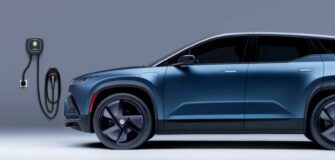Exploring the Crucial Role of Semiconductor Chips in Vehicles
In an era defined by rapid technological advancement, the automotive industry has embraced innovation like never before. The fusion of cutting-edge electronics and traditional mechanics has given birth to a new generation of vehicles that are smarter, more efficient, and safer than ever. At the heart of this transformation lies the semiconductor chip – a tiny component that wields immense power. A recent article from Hindustan Times Auto sheds light on the diverse applications of semiconductor chips in vehicles, revealing the intricate web of connectivity and functionality that they enable.
Powering Infotainment and Connectivity
Modern vehicles are more than just modes of transportation; they have evolved into digital ecosystems. Semiconductor chips play a pivotal role in powering the infotainment systems that keep drivers and passengers entertained and informed. From touchscreens and voice recognition to navigation and smartphone integration, these chips facilitate seamless communication between various components, providing an immersive and connected driving experience.
Enhancing Safety and Driver Assistance
Safety has taken center stage in the automotive industry, and semiconductor chips are the unsung heroes in this narrative. Advanced driver assistance systems (ADAS) rely heavily on these chips to process data from sensors, cameras, and radars, enabling features like lane departure warnings, adaptive cruise control, and automatic emergency braking. By analyzing real-time information, semiconductor chips contribute to reducing accidents and making roads safer for everyone.
Enabling Engine Performance Optimization
Beneath the hood, semiconductor chips work tirelessly to optimize engine performance and fuel efficiency. These chips control crucial processes like fuel injection, ignition timing, and exhaust emissions. By fine-tuning these factors in real time, they ensure that the engine operates at its peak efficiency, resulting in better mileage and reduced environmental impact.
Revolutionizing Electric and Hybrid Vehicles
The rise of electric and hybrid vehicles has introduced new complexities and opportunities in the automotive world. Semiconductor chips are vital in managing the intricate interplay between battery cells, electric motors, and power distribution systems. These chips not only ensure smooth transitions between electric and gasoline modes in hybrid vehicles but also contribute to maximizing the range and efficiency of purely electric vehicles.
Elevating Autonomous Driving
Autonomous driving represents the pinnacle of automotive innovation, and semiconductor chips are the cornerstones of this vision. The processing power required to interpret massive amounts of data and make split-second decisions is immense. Semiconductor chips equipped with artificial intelligence (AI) and machine learning capabilities play a critical role in enabling self-driving cars to perceive their surroundings, analyze complex scenarios, and navigate safely.
Supply Chain Challenges
While the integration of semiconductor chips into vehicles has unlocked a new era of possibilities, it has also exposed vulnerabilities in the automotive supply chain. The global shortage of semiconductor chips, highlighted in the article from Hindustan Times Auto, underscores the delicate balance between supply and demand. This shortage has disrupted production schedules and emphasized the need for diversification and resilience in the supply chain.
Conclusion
From entertainment and safety to performance and autonomy, semiconductor chips have transformed vehicles into sophisticated, interconnected machines. As the automotive industry hurtles toward a future driven by electrification, connectivity, and automation, the role of semiconductor chips will only become more pivotal. While supply chain challenges might create temporary roadblocks, the long-term trajectory points toward a more intelligent, efficient, and innovative automotive landscape powered by the invisible force of semiconductor chips.









